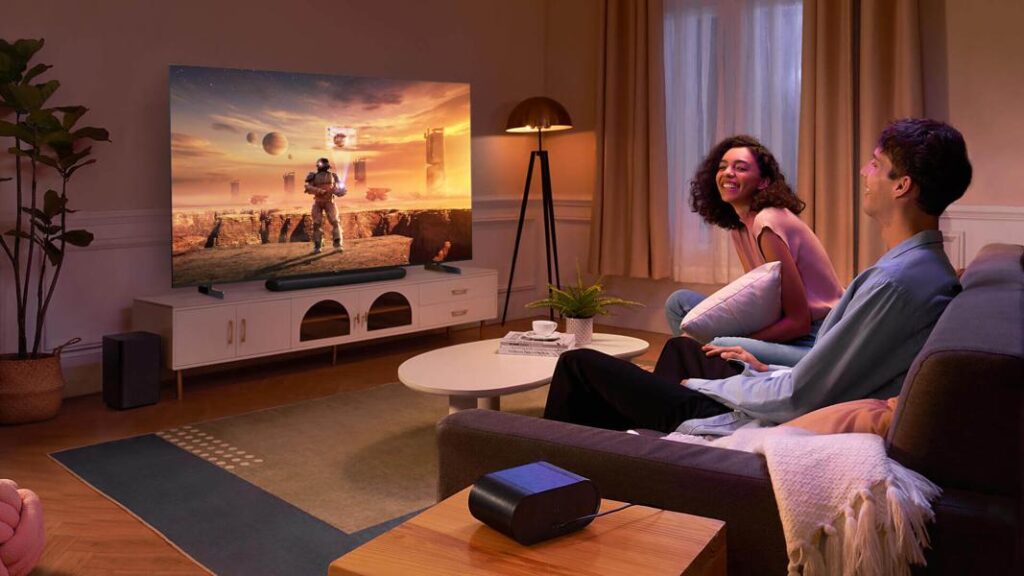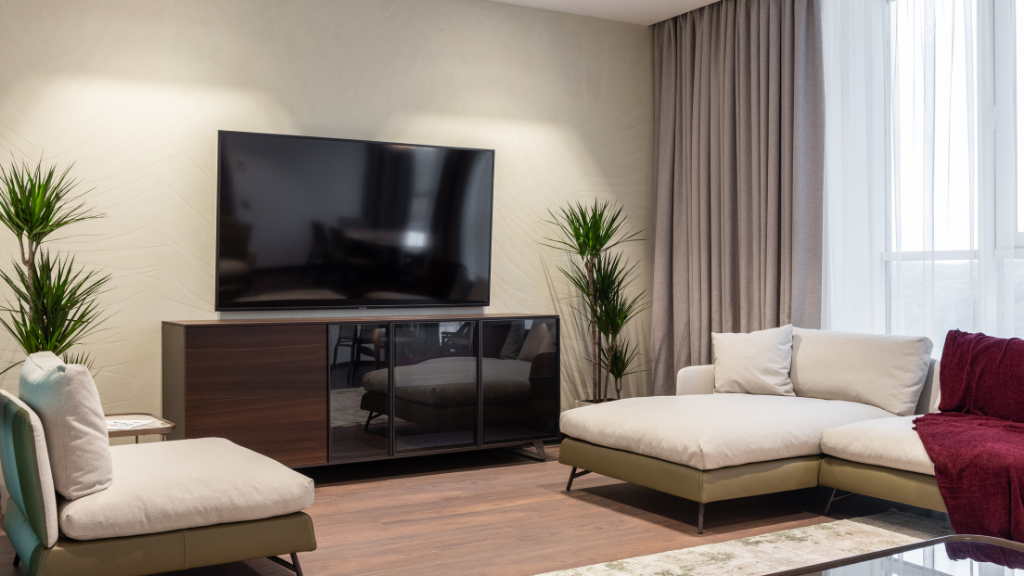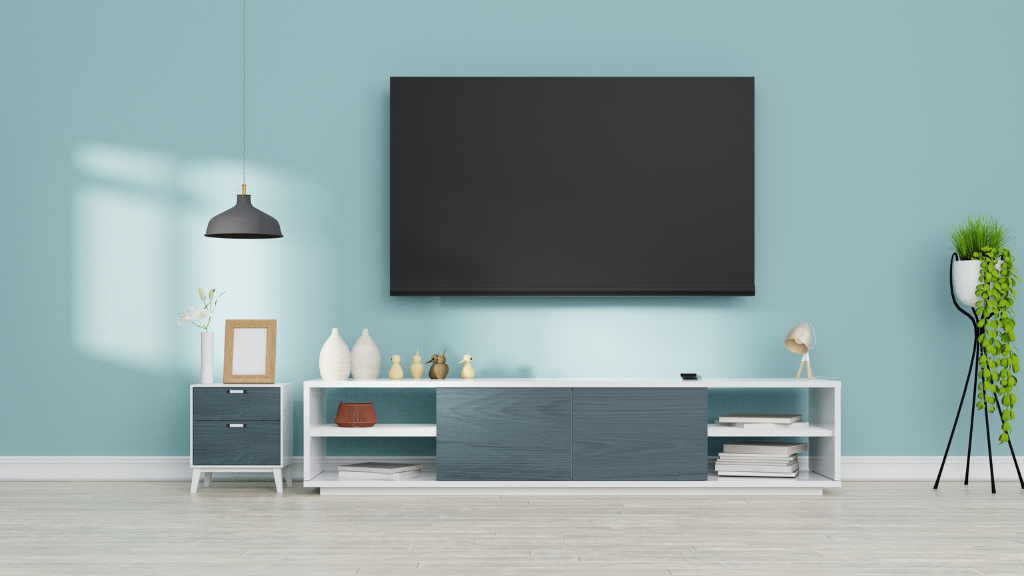How Wide is a 65 Inch TV? Television has become an integral part of many people’s lives, offering both relaxation and entertainment. After a long and tiring day, families often gather to unwind and enjoy their favorite shows, creating cherished moments together. Whether it’s indulging in binge-worthy series or sharing laughter through movies during holidays, television provides a platform for bonding and quality time. Beyond entertainment, it also serves as a source of information, keeping viewers updated on current events through news broadcasts, sports highlights, and other programs.
Knowing how wide is a 65 inch TV is essential for proper furniture placement. For an immersive and unforgettable entertainment experience, there’s no substitute for the grandeur of a larger-than-life television. Models in the 65-inch range offer a compelling proposition. Many people wonder how wide is a 65 inch TV is before making a purchase. These expansive displays are capable of delivering breathtaking picture quality and higher resolutions, transforming your living room into a private cinematic sanctuary. With every scene brought to life in vivid detail and lifelike dimensions, you’ll be transported to the heart of the action, losing yourself in the magic of your favorite movies and shows.
Also Read About Top 10 TV Unit Designs for Your Modern Home
Maintaining a Safe and Comfortable TV Viewing Distance

The answer to how wide is a 65 inch TV? helps in deciding on the ideal viewing distance. To ensure optimal eye health while enjoying a 65-inch television, it’s crucial to maintain a viewing distance of at least 9 feet. This recommendation, endorsed by eye specialists, helps prevent eye strain. Consequently, before investing in a new television, carefully consider the available space in your room to accommodate this necessary viewing distance. Furthermore, proper television placement is essential: position the screen at a height where your eyes naturally align with its middle for a comfortable and strain-free viewing experience.
Proper viewing distance is crucial for enjoying your 65-inch TV without straining your eyes or neck. Generally, the ideal distance is about 1.5 to 2.5 times the screen’s diagonal size. For a 65-inch TV, this translates to roughly 6.5 to 10 feet. Remember, these are guidelines; personal preference and content type also influence optimal viewing distance. Understanding how wide a 65 inch TV is crucial for proper furniture placement. Experiment to find your sweet spot. Always prioritize comfort and avoid sitting too close, as this can cause eye fatigue.
How Wide is a 65 Inch TV?

Understanding the dimensions of a 65-inch TV is crucial for proper planning and installation. While the “65 inches” refers to the screen’s diagonal measurement, the actual width is significantly less.
On average, a 65-inch TV is approximately 57.2 inches wide. However, it’s essential to note that this dimension can vary slightly depending on the specific model and brand. Some TVs might be marginally wider or narrower.
To ensure accuracy and avoid any surprises, always consult the product specifications provided by the manufacturer before making a purchase. These specifications will detail the exact width, height, and depth of the TV, including measurements with and without the stand.
By carefully considering these dimensions, you can confidently select the perfect TV for your space and enjoy an optimal viewing experience.
What Do You Mean by a 65-Inch TV?

Knowing how wide is a 65 inch TV is helps avoid buying a TV that’s too large. When you see a television labeled as “65 inches,” it’s important to understand that this measurement doesn’t refer to the length of the TV itself, but rather to the diagonal distance from one corner of the screen to the opposite corner. In simpler terms, it’s the length of a straight line drawn from the top left to the bottom right of the screen. Factors like bezel thickness can influence how wide is a 65 inch TV actually is.
While a 65-inch TV is often described as such, the actual screen size might be slightly smaller, perhaps around 64 inches and 5 inches. This slight discrepancy is due to technical factors and manufacturing tolerances. Ultimately, the “65-inch” designation provides a general indication of the screen’s size rather than an exact measurement.
The dimensions of a 65-inch TV typically encompass width, height, and depth, though these measurements fluctuate across different models and manufacturers. On average, a 65-inch TV without a stand measures approximately 58 inches wide, 34 inches high, and 1.7 inches deep. Incorporating a stand increases the depth to around 11.6 inches and height to roughly 36 inches. When converted to centimeters, these dimensions translate to 147 cm wide, 86 cm high, and 4.3 cm deep without a stand, and 147 cm wide, 90 cm high, and 33.8 cm deep with a stand.
Understanding Display Technology in 65-Inch TVs

1.LED
LED, an acronym for Light Emitting Diodes, is a technology similar to LCD but utilizes LED lights instead of traditional fluorescent bulbs for illumination. This fundamental difference grants LED displays several advantages over their LCD counterparts. Notably, LED displays are significantly more energy-efficient, consuming less power to produce the same level of brightness. Furthermore, the versatility of LED technology allows for a wider range of applications and design possibilities, making it a preferred choice in various electronic devices and displays.
2.LCD
LCD, an acronym for Liquid Crystal Display, represents the earliest form of display technology. Renowned for their high resolution capabilities and affordability, LCDs have been a cornerstone in the evolution of display screens.
3.QLED
QLED, an abbreviation for Quantum Light Emitting Diodes, represents an advanced evolution of traditional LED technology. Building upon the foundation of LEDs, QLED displays offer superior efficiency, delivering enhanced performance in terms of energy consumption. Furthermore, the versatility of QLED technology extends to both compact and expansive screen sizes, making it a suitable choice for a wide range of applications and preferences.
4.OLED
OLED, an acronym for Organic Light Emitting Diode, harnesses organic materials to produce light. This technology stands out for its gentle nature on the eyes, offering a more comfortable viewing experience compared to other display types. Moreover, OLED displays boast exceptional flexibility and provide a wider viewing angle, enhancing the overall visual experience.
Key Factors to Consider While Purchasing the TV

When selecting a television, screen size is undeniably a significant consideration, yet it represents only one facet of the decision-making process. Several other critical factors must be taken into account. Each television model possesses distinct specifications, which are meticulously detailed on the television itself. A careful examination of these specifications empowers consumers to make well-informed choices that align with their specific needs and preferences.
Screen Refresh Rate
How wide is a 65 inch TV? helps in selecting wall mounts. Refresh rate is a crucial aspect to consider when purchasing a television, particularly if you’re an avid movie or series enthusiast. A television’s refresh rate determines how many times the screen image is refreshed per second. A higher refresh rate translates to smoother motion and reduced motion blur. Conversely, a low refresh rate can lead to noticeable image quality degradation, especially during fast-paced scenes. This manifests as sudden lag or judder, disrupting the viewing experience and diminishing the overall enjoyment of your favorite content. To ensure optimal visual performance and eliminate these distractions, investing in a television with a high refresh rate is essential.
Sound Quality
The sound quality of a television is influenced by several factors, including the power output of its speakers, the total number of speakers integrated into the TV, and whether or not a soundbar is used in conjunction with it. A key factor contributing to sound quality is the power level of the speakers; generally, higher power output translates to better sound quality.
Resolution
The quality of a TV’s picture is directly linked to its resolution, which is determined by the number of pixels it contains. A higher pixel count translates to a higher resolution and, consequently, a sharper, more detailed image. For optimal viewing experience on a 65-inch screen, a 4K resolution is generally considered ideal, as it provides a level of clarity and detail that significantly enhances the visual impact of content.
How to Connect Your Devices
Understanding How wide is a 65 inch TV? can aid in room aesthetics. If you intend to utilize your television for enjoying movies or TV series by employing external sources such as a pen drive, or if you have plans to play video games on your television, it is essential to carefully examine the available connectivity options before making a purchase decision. This will ensure that the television is equipped with the necessary ports and features to accommodate your preferred methods of content consumption and entertainment.
How to Install a 65-Inch TV?
There are two primary methods for installing a television within a room. The first option involves mounting the television directly onto the wall, creating a sleek and space-saving aesthetic. Alternatively, the television can be positioned on a suitable TV stand, offering flexibility in terms of placement and the ability to incorporate additional components such as audio equipment or gaming consoles within the entertainment center.
How to Set Up Your TV on a Stand

To fit your décor, you must know, How wide is a 65 inch TV? Properly positioning your TV on a stand is crucial to prevent damage. Ensure the table you choose is sturdy enough to support the TV’s weight without wobbling or collapsing. Additionally, the table’s surface area should be sufficiently wide to accommodate the entire TV, preventing accidental falls that could result in costly repairs or replacements.
How to Mount Your TV on the Wall

Determining the ideal height for your TV is crucial for an optimal viewing experience. Accurately measure and mark the spot on your wall where the TV should be positioned to avoid discomfort or strain while watching. Once you’ve established the perfect height, proceed with mounting the TV securely using the necessary tools. If you’re unsure about the process or prioritize safety, consider enlisting the help of a professional installer to handle the task for you.
Conclusion
Television, a timeless companion in countless households, has managed to retain its allure even in the age of digital dominance marked by the internet and smartphones. Beyond being a mere source of entertainment and relaxation, television acts as a powerful catalyst for family bonding, bringing people together under one roof to share laughter, tears, and unforgettable moments. Its ability to create shared experiences and foster a sense of togetherness remains unparalleled, solidifying its enduring position as a cherished cornerstone of domestic life.
Transform your living room into a captivating cinematic haven with this exceptional device. Immerse yourself in a theater-like experience, right at home, thanks to its unparalleled picture and sound quality. No longer confined to a specific seating distance, you can freely enjoy your beloved series and movies from any corner of the room, all while being enveloped in a world of visual and auditory brilliance.
Considering the limitations imposed by available space and budget, it is undoubtedly advisable to opt for a 65-inch television. Such a screen size would provide an optimal viewing experience, allowing individuals to fully immerse themselves in the captivating visuals of their preferred programs.






